Manitoba Insect & Disease Update: August 8, 2014
Compiled by:
- John Gavloski, Entomologist
Manitoba Agriculture, Food and Rural Development
Phone: (204) 745-5668
Fax: (204) 745-5690. - Vikram Bisht, Plant Pathologist
Manitoba Agriculture, Food and Rural Development
Phone: (204) 745-0260
Fax: (204) 745-5690
To report observations on insects or plant pathogens that may be of interest or importance to farmers and agronomists in Manitoba, please send messages to the above contact address.
To be placed on an E-mail list so you will be notified immediately when new Manitoba Insect and Disease Updates are posted, please contact John Gavloski at the address or numbers listed above.
To be placed on an E-mail list so you will be notified immediately when new Manitoba Insect and Disease Updates are posted, please contact John Gavloski at the address or numbers listed above.
Summary
With warm temperatures this week, there are many fields which may be stressed due to moisture deficit. Corn plants are doing well with the heat that we are getting now. Grasshoppers and Lygus bugs are currently the insects of most concern.
Canola
Pathology: Scouting for canola diseases has begun. Blackleg, root rots, white mold, aster yellows and alternaria pod blight will be surveyed. Blackleg and root pinching with and without damage from root maggots is being recorded in some fields. A few, but not many, had Rhizoctonia isolations from pinched and lodged plants.
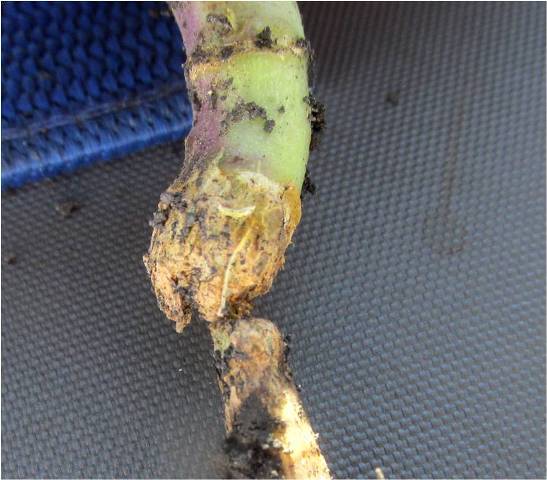
Fig.1. Root rot and pinching, with blackleg. Photo: Vikram Bisht, MAFRD.
Lygus bugs: The growth stage where canola has the most potential to have yield reduced by Lygus bugs is the early-podding stage. Canola can compensate well for potential damage to flowers, especially if there is adequate soil moisture. Lygus bugs will feed on developing seeds during the early-podding stages, and this is where there is potential for yield loss if populations are above economic thresholds. Assuming canola is valued at $10.00/bushel, and the control cost is $14.00/acre, the economic threshold from when seeds are enlarging in the lower pods (stage 4.4) to when seeds in the lower pods are full size (stage 5.1) is 11 Lygus bugs in 10 sweeps. When the seeds in the lower pods are green (stage 5.2), the economic threshold, using the same assumptions of crop value and control cost, would be 16 Lygus bugs in 10 sweeps. Prior to there being seeds enlarging in the lower pods, and once seeds in the lower pods have started to become mottled green-brown (stage 5.3), there are no economic thresholds for Lygus bugs in canola, as Lygus bugs are not likely to be economical prior to or after these stages. What needs to be emphasized regarding Lygus in canola is that it is the feeding to the developing seeds that is potentially economical if Lygus levels are high, not feeding to buds and flowers, from which the plants can usually compensate well from.
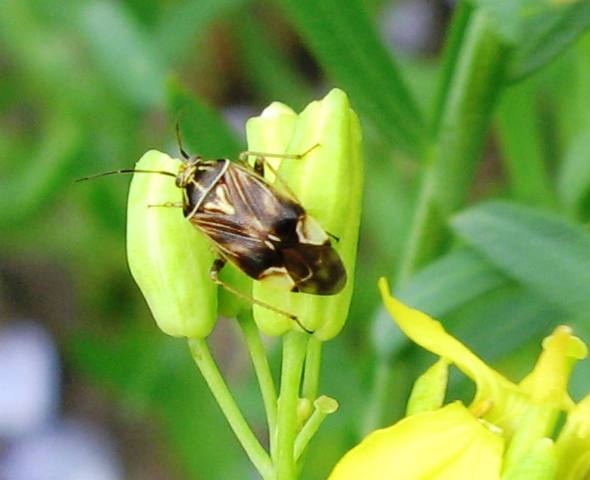
Fig. 2. Adult Lygus bug.
Corn
Scouting for Goss’s wilt and leaf blight disease will help growers understand the status in their crop. A few plants are showing common smut, which is not a serious disease. Common smut can infects leaves, cobs and tassels.
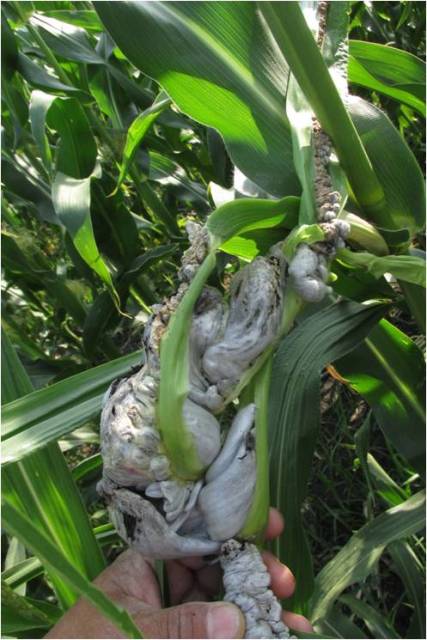
Fig. 3. Common smut of corn. Photo: Vikram Bisht, MAFRD.
Soybean
Some soybean fields need water; with mid-afternoon wilting of leaves the yield potential will be affected. Some fields with plant height of 15-18” at R5 appear to be small and may not do well. In some regions, due to heat and water stress, many fields are not row closed and lower leaves are falling off.
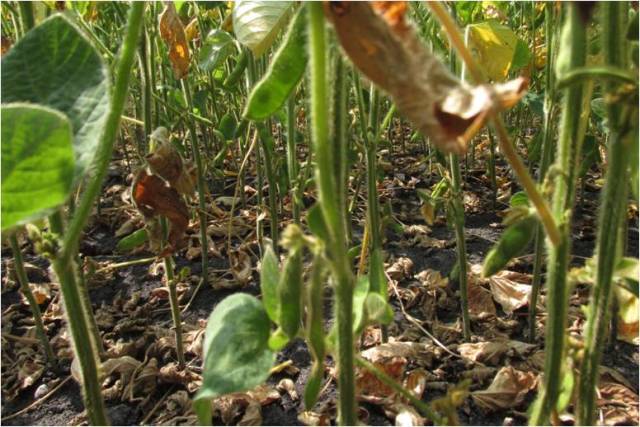
Fig. 4. Heat and brown spot causing defoliation on soybeans. Photo: Vikram Bisht, MAFRD.
Wheat
The Fusarium head blight (FHB) showing up in winter wheat is at higher levels than that of the spring wheat. This year flowering of many winter wheat crops occurred in high FHB risk period, and may show up as higher percent Fusarium diseased kernels (FDK) at the elevators. Adjusting the harvester fan to throw out the lighter FDK seed could prove helpful in improving the grade at the elevator.
Red Mites on Grasshoppers
Some have been asking about red mites seen on the wings of grasshoppers. These red mites on the grasshoppers are parasitic red mites (Eutrombidium locustarum). They feed on the blood (hemolymph) of grasshoppers. They also prey on grasshopper eggs. Each female mite can lay up to 4,000 eggs, providing mite populations the potential to increase rapidly and substantially as grasshopper populations increase. Research in Montana has shown that these mites can reduce the survival and reproduction of grasshoppers.
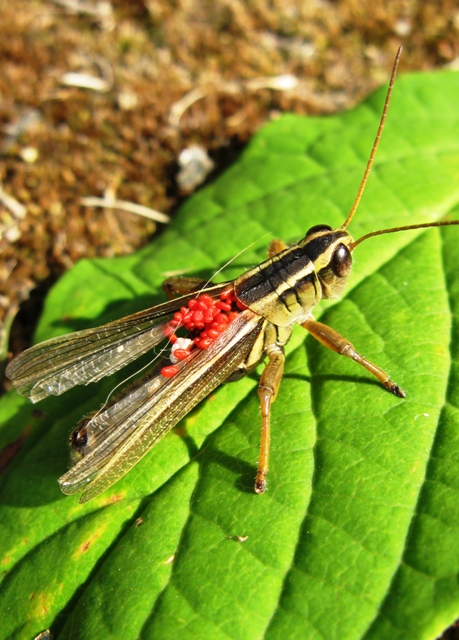
Fig. 5. Red mites on grasshoppers.
Trap Counts for Bertha Armyworm
Monitoring adult moths to forecast the risk of bertha armyworm larvae being of concern has been completed. Trap counts generally remained at low risk for bertha armyworm. Out of 65 traps reporting data, 2 were in the "uncertain risk" category, and 63 traps were in the low risk category. Highest trap counts were:
| Nearest town | Region | Cumulative Count |
|---|---|---|
| Altamont | Pembina | 587 |
| Tourond | Eastman | 310 |
| Roseland | Southwest | 267 |
| Ridgeville | Eastman | 237 |
| Fannystelle | Red River | 219 |
| Darlingford | Pembina | 217 |
A map and summary of trap counts for 2014 can be found at: http://www.gov.mb.ca/agriculture/crops/insects/bertha-armyworm-forecast.html

